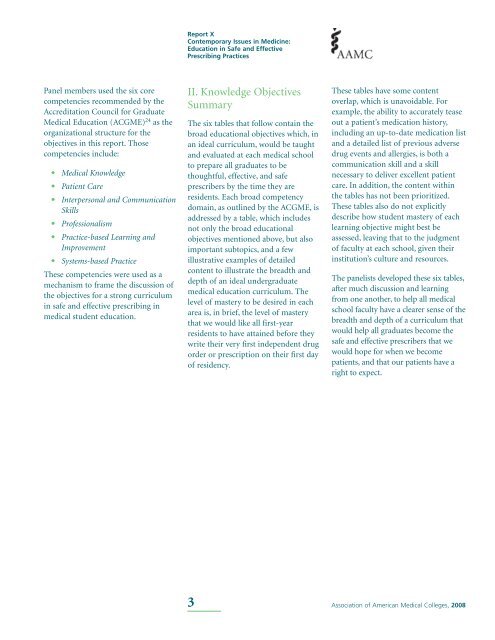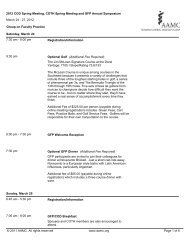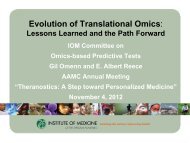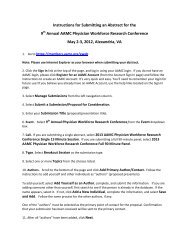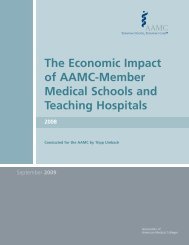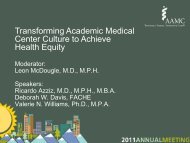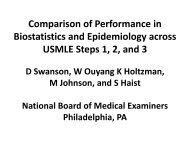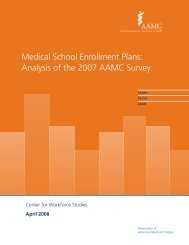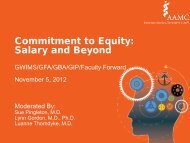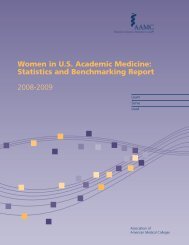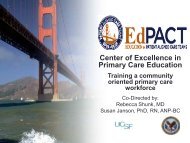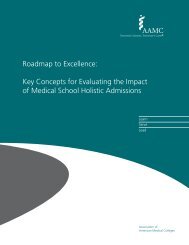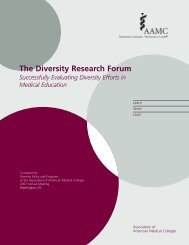Education In Safe and Effective Prescribing Practices - AAMC's ...
Education In Safe and Effective Prescribing Practices - AAMC's ...
Education In Safe and Effective Prescribing Practices - AAMC's ...
You also want an ePaper? Increase the reach of your titles
YUMPU automatically turns print PDFs into web optimized ePapers that Google loves.
Report X<br />
Contemporary Issues in Medicine:<br />
<strong>Education</strong> in <strong>Safe</strong> <strong>and</strong> <strong>Effective</strong><br />
<strong>Prescribing</strong> <strong>Practices</strong><br />
Panel members used the six core<br />
competencies recommended by the<br />
Accreditation Council for Graduate<br />
Medical <strong>Education</strong> (ACGME) 24 as the<br />
organizational structure for the<br />
objectives in this report. Those<br />
competencies include:<br />
• Medical Knowledge<br />
• Patient Care<br />
• <strong>In</strong>terpersonal <strong>and</strong> Communication<br />
Skills<br />
• Professionalism<br />
• Practice-based Learning <strong>and</strong><br />
Improvement<br />
• Systems-based Practice<br />
These competencies were used as a<br />
mechanism to frame the discussion of<br />
the objectives for a strong curriculum<br />
in safe <strong>and</strong> effective prescribing in<br />
medical student education.<br />
II. Knowledge Objectives<br />
Summary<br />
The six tables that follow contain the<br />
broad educational objectives which, in<br />
an ideal curriculum, would be taught<br />
<strong>and</strong> evaluated at each medical school<br />
to prepare all graduates to be<br />
thoughtful, effective, <strong>and</strong> safe<br />
prescribers by the time they are<br />
residents. Each broad competency<br />
domain, as outlined by the ACGME, is<br />
addressed by a table, which includes<br />
not only the broad educational<br />
objectives mentioned above, but also<br />
important subtopics, <strong>and</strong> a few<br />
illustrative examples of detailed<br />
content to illustrate the breadth <strong>and</strong><br />
depth of an ideal undergraduate<br />
medical education curriculum. The<br />
level of mastery to be desired in each<br />
area is, in brief, the level of mastery<br />
that we would like all first-year<br />
residents to have attained before they<br />
write their very first independent drug<br />
order or prescription on their first day<br />
of residency.<br />
These tables have some content<br />
overlap, which is unavoidable. For<br />
example, the ability to accurately tease<br />
out a patient’s medication history,<br />
including an up-to-date medication list<br />
<strong>and</strong> a detailed list of previous adverse<br />
drug events <strong>and</strong> allergies, is both a<br />
communication skill <strong>and</strong> a skill<br />
necessary to deliver excellent patient<br />
care. <strong>In</strong> addition, the content within<br />
the tables has not been prioritized.<br />
These tables also do not explicitly<br />
describe how student mastery of each<br />
learning objective might best be<br />
assessed, leaving that to the judgment<br />
of faculty at each school, given their<br />
institution’s culture <strong>and</strong> resources.<br />
The panelists developed these six tables,<br />
after much discussion <strong>and</strong> learning<br />
from one another, to help all medical<br />
school faculty have a clearer sense of the<br />
breadth <strong>and</strong> depth of a curriculum that<br />
would help all graduates become the<br />
safe <strong>and</strong> effective prescribers that we<br />
would hope for when we become<br />
patients, <strong>and</strong> that our patients have a<br />
right to expect.<br />
3<br />
Association of American Medical Colleges, 2008


